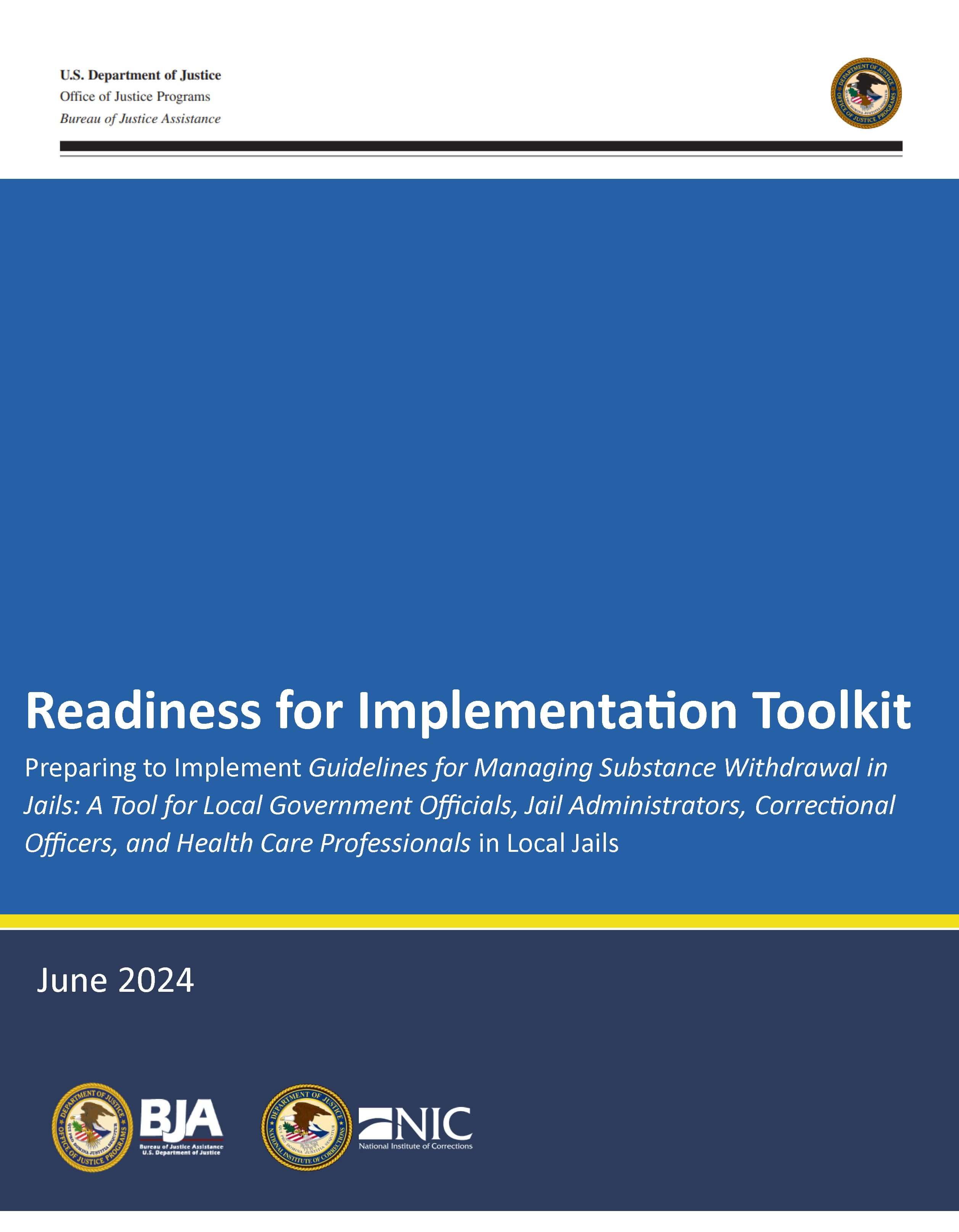BJA and NIC recognize that establishing and implementing policies and procedures to effectively manage substance withdrawal may be a significant undertaking. Therefore, BJA and NIC will support implementation efforts of jails and their partners, offering direct training and technical assistance (TTA) opportunities and the following implementation tools and resources.
Readiness for Implementation Toolkit
This Readiness for Implementation Toolkit is to help jail administrators, in collaboration with correctional staff, health care professionals, and community partners, build on their jail’s current efforts to manage substance withdrawal as outlined in the Guidelines, which recognizes that each jail will start at a different place due to its unique circumstances. For example, some jails may be exploring ways to establish screening policies and procedures as their first step toward implementation; others have some essentials of effective withdrawal management in place and are seeking to address identified gaps; still others have established withdrawal management practices, policies, and procedures and are aiming to enhance them.
Implementation Readiness Stages




*Including methadone and burprenorphine for preventing withdrawal from opioids, as well as long-acting benzodiazepines for managing withdrawal from alcohol or sedatives.
Regardless of the status of substance withdrawal management at your facility, the first step is for you, your staff (both health care and custody), and external stakeholders to become familiar with the Guidelines. Following a brief description of the withdrawal management process, the Guidelines present recommendation statements (RS) and supporting narrative in five sections:
- General Guidance (G-1-70) addresses issues universal to substance withdrawal management in jails.
- The ensuing sections focus on substance-specific considerations for alcohol (A-1-51), sedatives (SH-1-22), opioids (O-1-61), and stimulants (S-1-21).
The Guidelines will ground you and your team in the basics of withdrawal management, allowing you to facilitate effective management of jail resources, foster community partnerships, and ensure care for individuals at risk for or experiencing substance withdrawal.
This toolkit will help you and your leadership team assess the current services in your facility, identify areas in need of alignment with the Guidelines, and prioritize action steps.
Resources
Once you have read through the toolkit instructions, the next step is to spearhead your team’s completion of the Implementation Readiness Assessment. Results of the assessment will indicate your stage of readiness (Starting Out, On Our Way, or Refining) for implementing what is set forth within the Guidelines and identify areas in need of attention.
Next, work with your team to prioritize key areas for establishing, expanding, or refining substance withdrawal management at your facility using any or all of the checklists within the toolkit, which are cross-referenced to the Guidelines to help you and your team identify the extent to which existing policies and procedures align with the recommendation statements.
The above activities will help your team identify gaps and may indicate areas in which you need additional resources and support. The BJA COSSUP Resource Library and the Resources within these Guidelines web pages provide valuable resources and offer training and technical assistance (TTA) opportunities.
- TTA is provided free of charge. To submit a TTA request for any identified areas for which you need support, complete a TTA request form.
Featured Implementation Resources
-
Contains instructions, an initial implementation assessment tool, and checklists to assist jails and their partners in implementing the Guidelines.
-
View brief, informative videos and take self-directed courses to enhance learners’ awareness and foster a deeper understanding of topics related to substance withdrawal management.
-
Provides talking points to help jail administrators accurately and effectively speak about substance use disorder and its treatment when building support among community members, organizations, and leaders for withdrawal management and medication-assisted treatment (MAT) implementation.



